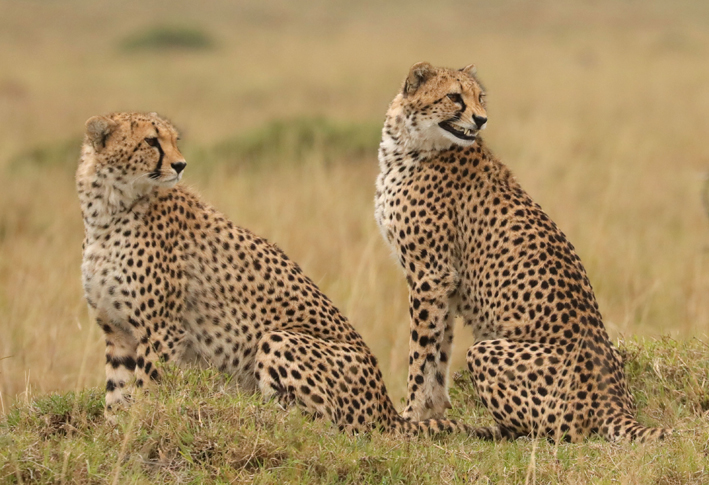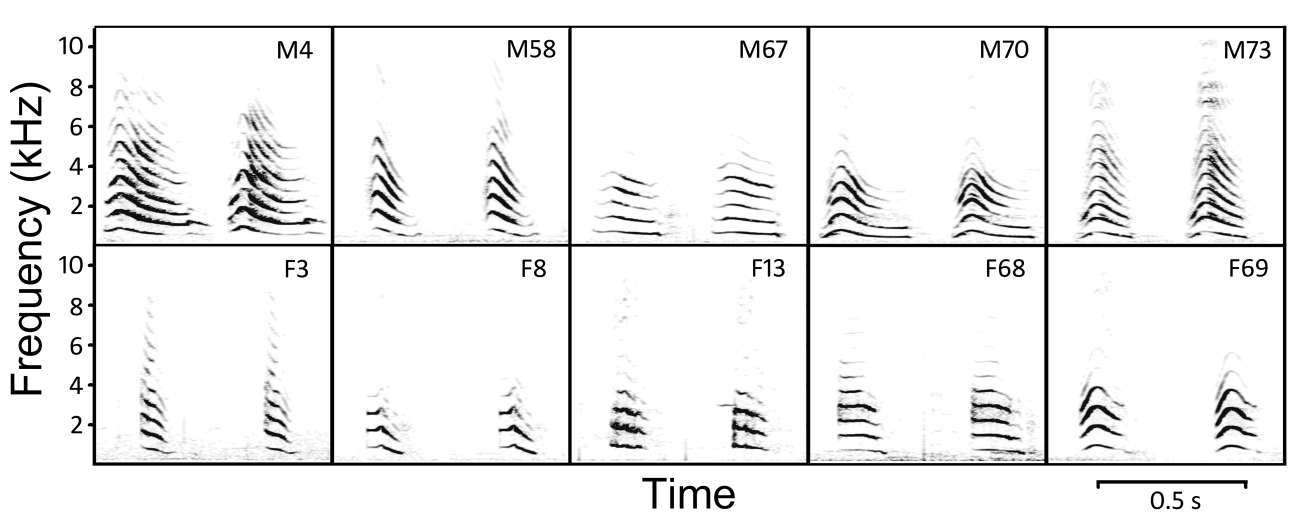
Until now, all research into cheetah sounds has been done in captivity, in zoos and nurseries. In enclosures, animals see each other, and they do not need to use long-distance sound signals for communication. Therefore, in captivity, cheetahs use such sounds mainly to communicate with staff, demanding food or being allowed out for a walk. Thus, the function of these sounds and the information encoded in them remained unknown until cheetah calls were recorded in their natural environment, in Kenya.
Our study showed that the long-distance sounds of cheetahs are as high-frequency as in captivity, and fully justify the term chirps, used in the literature for this type of call. In the wild, cheetahs use chirps to communicate with each other: calls between male coalitions, between potential sexual partners, and between mother and cubs. The chirps of adult male cheetahs are longer and lower in fundamental frequency than those of adult females. Discriminant analysis of acoustic parameters showed that the chirps of adult cheetahs also contain information about features that allow individuals to be distinguished by their calls. However, analysis of repeated recordings made a year or two later indicates that the signs of individuality in calls are unstable and cannot be used for long-term identification by calls.
Thus, cheetahs probably have to constantly update their knowledge of changes in the voice of conspecifics during regular meetings with them in order to reliably distinguish individuals that are out of sight by sounds .

The study results were published in the journal Ethology:
Chelysheva E.V., Klenova A.V., Volodin I.A., Volodina E.V., 2023. Advertising sex and individual identity by long-distance chirps in wild-living mature cheetahs (Acinonyx jubatus). Ethology, v. 129. https://doi.org/10.1111/eth.13366
Related materials:
Project for the study of Cheetahs "MARA-MERU"
Nauka.rf: "Russian scientists were the first in the world to study the chirping of cheetahs in
the wild"
Russian Academy of Sciences: "Long-distance roll calls of cheetahs contain individual
information about the animals"
Forpost Sevastopol: “Russian scientists were the first in the world to study the “chirping” of
cheetahs in the wild”
Ferra.ru: “Russian scientists are the first in the world to study the “chirping” of cheetahs in
the wild”
Zen: “Russian scientists are the first in the world to study the “chirping” of cheetahs in the
wild”
